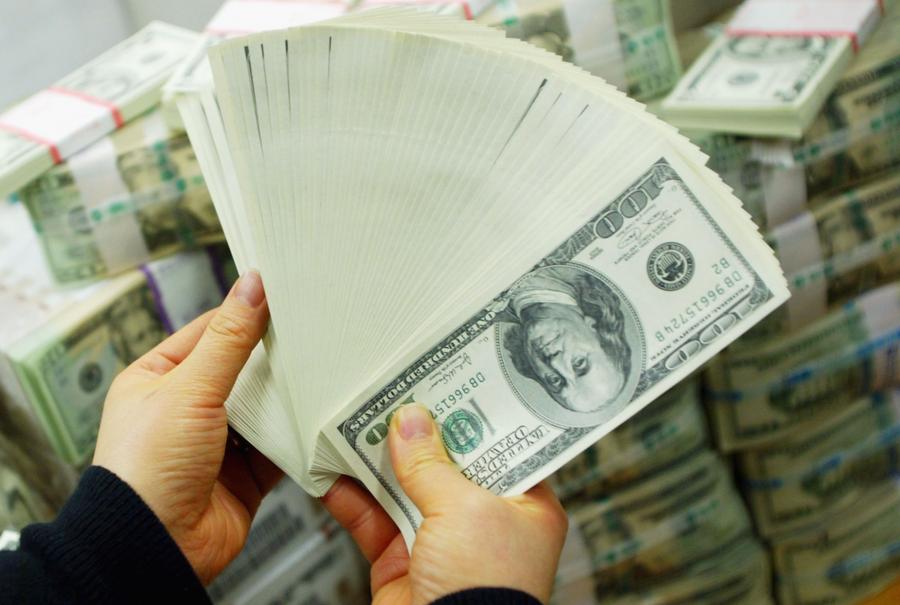According to his website, Frank Bourassa is "an Author, a Consultant, a Public Speaker and a regular guest on numerous TV shows such as 20/20 and good Morning America." He also happens to one of the world's most prolific producers of counterfeit money. He may be on the up-and-up today, but his path to fame (or infamy), fortune and jail was definitely not boring…
Beginnings
Bourassa became an entrepreneur as a pre-teen, when he started making money on the wrong side of the law. He was involved in petty larceny, drug smuggling, and grand larceny. Bourassa started a shoplifting ring in junior high school. This wasn't a guy swiping some gum and a Dr. Pepper from a convenience store – he turned it into a business.
Bourassa quit school at the age of 15 and moved out of his parent's house. During that time he worked as a mechanic and did some car theft on the side, to up his cash flow. He opened a factory in his twenties that made shoes and brake pads, but he sold the business because of stress and anxiety. So apparently crime was less stressful for him than legit work – he needed the rush. He got rid of the business and set out to amass his fortune in other ways, like pot smuggling. He was eventually busted and sentenced to a few months behind bars, but Bourassa wasn't heading back to factory work when he got out of jail. He decided to make some money, literally. A lot of it. He studied counterfeiting techniques, made a plan, and decided to print over $200,000 in counterfeit U.S. twenty dollar bills. Even for "accomplished" counterfeiters, that's a huge sum. Some might even call it insane.

Chung Sung-Jun/Getty Images
Like many criminals, Bourassa seems to harbor some delusions of grandeur. You kind of have to if you're going to attempt to outwit the Canadian and U.S. governments and get away with major crimes. Not that Bourassa got away with his massive scam – but in some people's eyes, because of the terms of his punishment, that's exactly what he did.
Becoming a Counterfeiter
So how did Frank Bourassa, a guy who dropped out of school at fifteen and got busted for pot smuggling, (almost) pull off one of the biggest counterfeiting scams in history? He bought some pretty pricey printers, for a start. The machines cost about $125,000, and he spent around $300,000 total for equipment and materials. In other words, he was not Mickey Mousing this operation.
Bourassa told GQ that he'd started reaching out to paper mills in Europe and Asia in 2008 under the alias Thomas Moore, since starting his operation outside North America would be less likely to pique the curiosity of local authorities.
After searching around, he finally found a paper company in Lenzburg, Switzerland called Artoz, and the owners and employees apparently didn't care that Bourassa was ordering special paper with the exact same ingredients as U.S. bills.
According to GQ, Bourassa forked over $15,000, sent under a false name through a Swiss bank account, to a company in Düren, Germany, that manufactured a drum with the likenesses of President Andrew Jackson's face. "It was easy," Bourassa told GQ. "To you, he's Andrew Jackson. To some guy in Germany, who the fuck is it? Some guy's face. He doesn't know."
When Bourassa's operation was under way, it took him a while to find any buyers, for obvious reasons. Eventually, though, he found a few takers, but the money wasn't selling fast enough and Bourassa was afraid the authorities would get wind of the fake bills floating around Canada and the U.S. According to an ABC News piece on Bourassa and his scheme, the authorities started spotting the bills in Florida and Las Vegas.
Getting Busted
After two years, an undercover cop heard about the false bills and agreed to buy some. He ordered $100,000 worth for $30,000. After that first transaction, the next day the undercover cop ordered another $100,000. Bourassa was going to deliver the bills to his middleman, but he got spooked. He started being more cautious, staring through binoculars for hours on end to make sure no one was on his scent. It was a lot of hurry up and wait.
But then it all came crashing down. On May 23, 2012, Bourassa woke to the sounds of men shouting, fists pounding the door of his girlfriend's house at five in the morning. Representatives of the Royal Canadian Mounted Police were standing there when Bourassa opened the door, along with a pair of agents from the U.S. Secret Service. They searched the home, and found some pretty suspicious looking fake bills and some of the equipment used in the operation. "To detect the counterfeit on this one is very difficult," RCMP investigator Dan Michaud told ABC News.
Bourassa was busted, but the cops were under the impression that $949,000 was the extent of Frank's operation. They had no clue yet about the $200 million-plus that Bourassa had hidden away in a farmer's garage. Even though Bourassa was in Canada, which is a bit more lenient, U.S. agents told Frank that they would extradite him to the U.S., where he would serve serious time in a federal penitentiary.
But Bourassa had an advantage, because under Canadian law, the police need evidence to secure a search warrant. The surveillance footage they took also showed Frank pulling into a carport at a drop-off spot, but not actually physically moving boxes of cash into the house. So Bourassa's attorney argued that the warrant the cops used for the raid had been issued on insufficient evidence and that the search of the house was, in fact, illegal. He went free on a $10,000 bail bond.
After the bust, he went legit again and worked in construction. In 2013 his case went to trial. For both American and Canadian authorities, the chance to take from $200 million in high-quality counterfeits out of circulation was hard to ignore. Canadian authorities eventually agreed that if he showed them where the fake bills had been stashed, he would pay a small fine of $1,350 on some drug-possession charges. And that's how one of the biggest counterfeiters in history got off after a month and a half behind bars.
Going Hollywood
Cut to 2015, and Bourassa is Frank has gone straight. Like his website says, he's consulting for governments and businesses in fraud-protection tactics, and has started Mastercounterfeiter.com. He sells self-help techniques that he calls the Paradigm Shift System. He's also working on his memoirs, which are "posed to become a major bestselling book as well as dazzling feature film," according to his site. Maybe, after all the years of scheming, Hollywood is just where Frank Bourassa belongs.




















